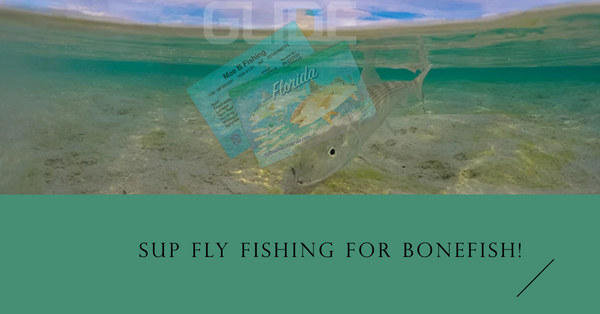
Sup fly fishing tips for bonefish.
Key Highlights:
- Choosing the Right Paddle Board: Opt for a board like the Glide O2 Angler, featuring a flat bottom, removable fin, and ample width for stability and maneuverability in shallow waters.
- Understanding Bonefish Habits: Fish in warm, shallow waters during early mornings or late afternoons for the best bonefish activity. Look for grass flats and sand flats close to shore where bonefish feed.
- Selecting Fly Fishing Equipment: Use a 9-foot, 6-weight rod with a saltwater-resistant reel and floating line. Choose smaller flies (size 4 or 5) in colors that match the environment.
- Casting Techniques: Aim for accuracy by casting the fly ahead of the bonefish and experimenting with different retrieves to attract their attention.
- Landing Strategies: Employ a long leader (10-15 feet) with a 30-pound test tippet and use a net for landing bonefish to avoid losing your catch
Fly fishing for bonefish is one of the most rewarding activities an angler can do. It requires a lot of skill, patience and knowledge to successfully catch bonefish. This blog article is designed to give readers an overview of the basics of fly fishing for bonefish and some helpful tips to make the experience more successful.
The right fishing paddle board.

One of the most important fishing tips we can give you is to choose the right paddle board. The Glide O2 Angler is a perfect choice. Other boards on the market will work as well, look for ones with a flat bottom, removable fin that sits in a US-style finbox and is over 34 inches wide and 10'5" or longer.
When and where to fish for them.
First, it is important to understand the environment that bonefish inhabit and the best times for fly fishing for bonefish. Bonefish are most commonly found in warm and shallow waters in tropical climates. They generally travel in schools, so when you spot one, there are likely to be more nearby. The best times for fly fishing for bonefish are early morning and late afternoon when the sun is not too hot and the light is low.
Bonefish typically inhabit shallow areas of water, typically no deeper than 3 feet. Therefore, they can be found in grass flats and wide sand flats which are located close to shore. Due to their coloration, which helps them blend in with their environment, they can be difficult to spot. The best way to locate them is to look for their tails sticking out of the water, as when they feed, they use their nose to pin their prey to the ground, leaving the tail visible. The peak season for bonefish fishing in the Florida Key's is from March through October.
The right fly fishing equipment.
The next step is to choose the right equipment for fly fishing for bonefish. A 9-foot, 6-weight rod is ideal for this type of fishing, as it is lightweight and has enough backbone to cast the heavier flies used for bonefish. The reel should be saltwater resistant and equipped with a smooth and powerful drag system. When it comes to lines, a floating line is the best choice. You can also add a sink-tip line if you want to get down deeper.
When it comes to the flies you use for fly fishing for bonefish, size and color are two of the most important considerations. Bonefish are most often attracted to smaller flies, such as size 4 or 5, and you should choose a color that matches the environment, such as white, tan, or green. It is also important to choose a fly with a weedless hook, as bonefish often hide in grass and weeds.
Casting technique.
When it comes to casting, accuracy is key when fly fishing for bonefish. You should cast the fly ahead of the fish and let the fly sink for a few seconds before beginning the retrieve. It is also important to experiment with different retrieves, such as a slow steady retrieve, a quick strip, or a jerky retrieve. the view of the water from a stand up paddle board will give you an advantage sight fishing over those in fishing kayaks or other low to the water spots and water craft.
When it comes to landing a bonefish, it is important to use a good leader and tippet. A good leader should be 10 to 15 feet long, with a 30-pound test tippet. It is also important to use a net to land the bonefish, as they can be difficult to land with just a rod and line.

Finally, it is important to remember that fly fishing for bonefish can be both rewarding and challenging. It is important to keep practicing and to be patient, as it can take some time to become successful. With some practice and dedication, you can become an expert angler and enjoy the thrill of catching bonefish. Good luck! And let us know about your recent bonefish fishing trip at #glidesup on Instagram.


